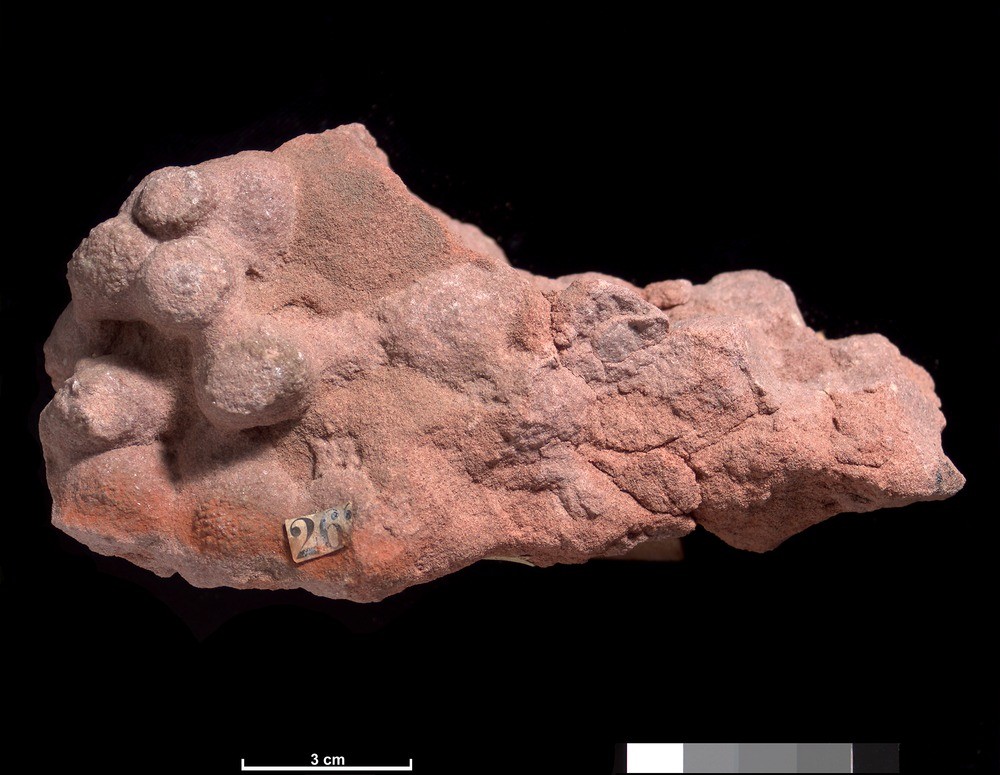| P number: | P521511 |
|---|---|
| Caption: | Rock specimen of sandstone. Shore cliff, Kaim of Mathers, Kincardineshire. |
| Description: | The sample is a medium-grained 'red' sandstone with a uniform composition and grainsize, but which is weathered to reveal a series of hard spherical concretions. British Geological Survey Petrology Collection sample number EMC 1804. Concretions form during diagenesis where certain constituents of sediments tend to become concentrated in certain parts of the rock, commonly accumulating around a nucleus point. The masses so formed may be rounded or irregular, and are known as concretions. Concretions can form from various different minerals including clay, ironstone, limestone, dolomite, calcite, chert (flint), gypsum, barite, limonite and several others. One of the best known types of concretion are flints, which form from the precipitation of silica in Cretaceous Chalk sediments. In Carboniferous rocks of north-east England very hard, large spherical concretions made of carbonates have resulted in the name 'cannonball limestone' being given to the rocks in which they have formed. |
| Date taken: | Wed Jan 01 00:00:00 GMT 2003 |
| Photographer: | Unknown |
| Copyright statement: | NERC |
| Orientation: | Landscape |
| Size: | 165.26 KB; 1000 x 775 pixels; 85 x 66 mm (print at 300 DPI); 265 x 205 mm (screen at 96 DPI); |
| Average Rating: | Not yet rated |
| Categories: | Best of BGS Images/ Fossils |
Reviews
There is currently no feedback

